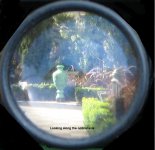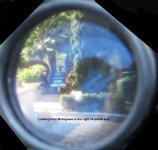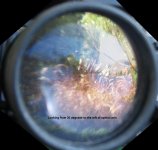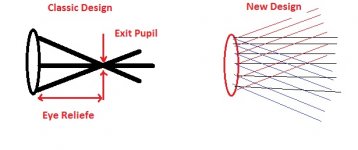FrankD
Well-known member
Omid,
I checked out your pics when you first posted them. I like the idea but am confused a bit by what I am seeing in the pic. Is that noticeable field curvature/edge distortion and/or uneven illumination of the image or does it just appear that way because of how far away we are viewing the eyepiece?
I checked out your pics when you first posted them. I like the idea but am confused a bit by what I am seeing in the pic. Is that noticeable field curvature/edge distortion and/or uneven illumination of the image or does it just appear that way because of how far away we are viewing the eyepiece?








